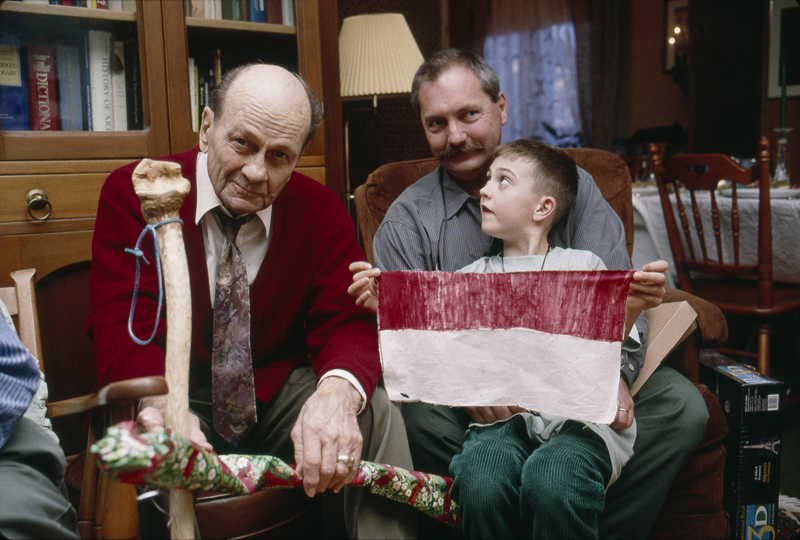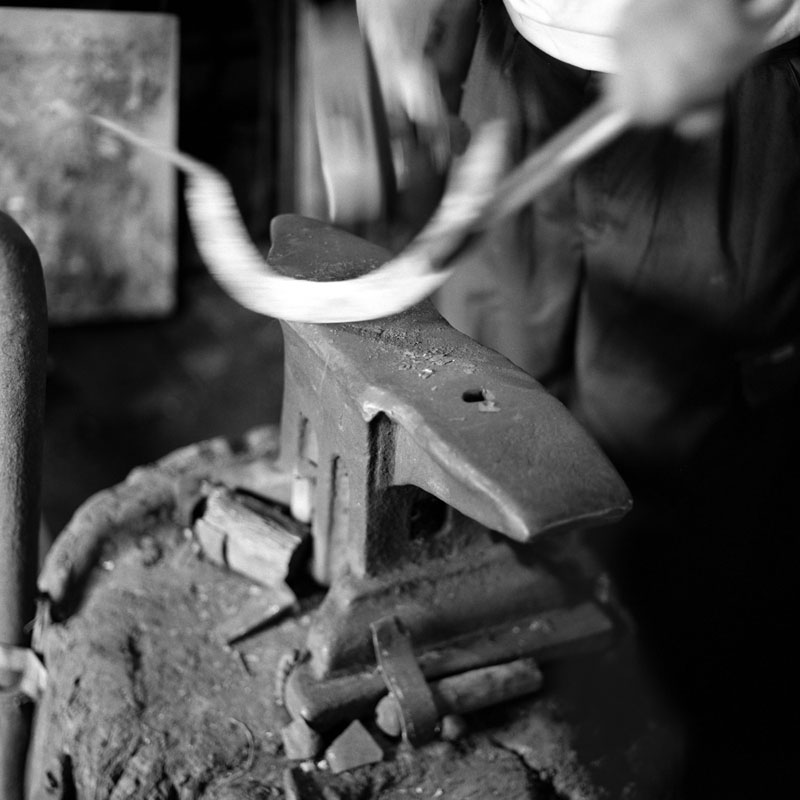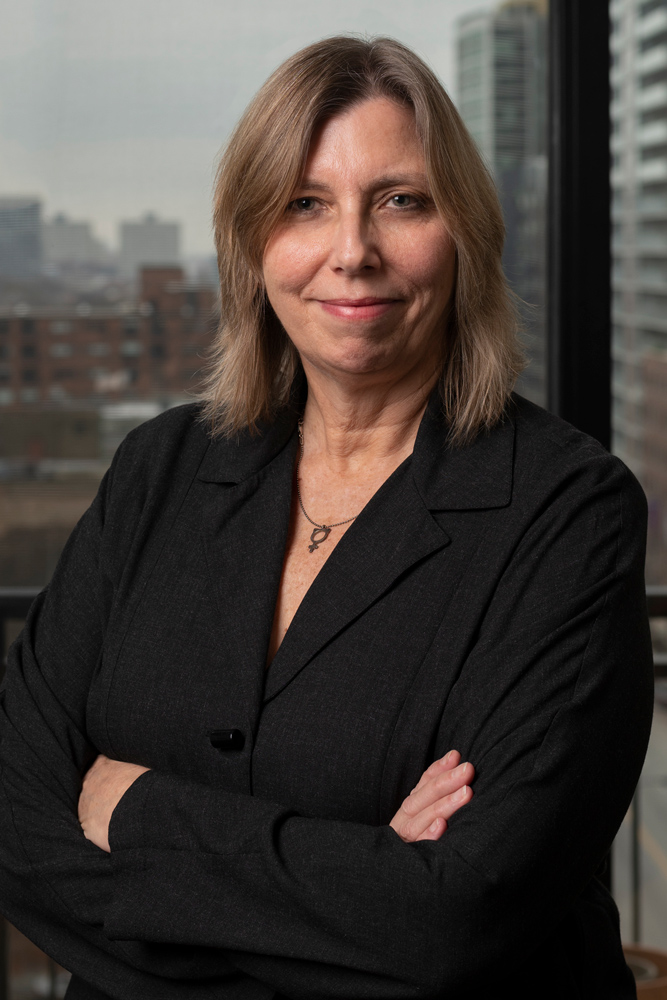Polonia and other Fables: Allan Sekula At the Renaissance Society (Exhib. Review)
Allan Sekula, Polonia and Other Fables, The Renaissance Society, Chicago, September 20–December 13, 2009
 “Polonia is the imaginary Poland that exists wherever there is a Pole,” writes Allan Sekula. “[It] is everywhere and nowhere at the same time.”(Allan Sekula, Polonia and Other Fables, bound text accompanying exhibition of same title, np.) The forty photographs (30 chromogenic prints and 10 archival inkjet prints) that comprised the exhibition Polonia and Other Fables explore aspects of Polish identity that lie somewhere between reality and myth, between Poland and the Polish diaspora.
“Polonia is the imaginary Poland that exists wherever there is a Pole,” writes Allan Sekula. “[It] is everywhere and nowhere at the same time.”(Allan Sekula, Polonia and Other Fables, bound text accompanying exhibition of same title, np.) The forty photographs (30 chromogenic prints and 10 archival inkjet prints) that comprised the exhibition Polonia and Other Fables explore aspects of Polish identity that lie somewhere between reality and myth, between Poland and the Polish diaspora.
Sekula photographed the Polish community in Chicago during various stays over a three-year period from 2007 to 2009. Chicago is home to over one million Poles, the largest Polish community outside of Warsaw. Also included are images from Poland, thus works shuttle images and viewers from Polish festivals and May Day parades in Chicago to the streets of Warsaw and rural scenes from villages, such as Ochojno and Wieckowice. Themes of immigration, nationalism and, in particular, labor (Sekula’s principle leitmotif) point to the interrelationship between Chicago and Poland, both historically and presently, and to the distinct narratives of each. Various wall-mounted quotes gathered from politicians, historians and writers expand these themes, as does a small book of writings by the artist.
A detail of a painting by Stanislaw Batowski from the collection of Chicago’s Polish Museum of America shows General Casimir Pulaski fighting alongside George Washington during a battle of the American Revolution. The photograph, symbolizing the early roots of US-Polish relations, provided an historical anchor for the exhibit and a kind of foil to other works that focus on post-9/11 military diplomacy and Poland’s inclusion in NATO. Three related works depict an air force base near Poznan and its F-16 Fighting Falcons, which Poland purchased from the US government in 2002. Another grouping documents the peripheries of CIA black sites in Poland, clandestine camps used for the torture and interrogation of prisoners of war from Iraq and Afghanistan.
Images of Poland’s military and global identity are juxtaposed with several images of labor that make visible the many contributions Poles make to the American economy. The candid portrait of a young Polish woman who is both an art student and a commodities trader is placed alongside a more journalistic view of diverse workers occupying Republic Windows and Doors in protest of the Chicago factory’s sudden closure in December 2008. Agrarian scenes of a pig farm in Wieckowice take on a more political dimension when one title reveals that this former collective farm is now owned by Smithfield Foods, an American multinational corporation. Missing from this theme of labor, however, was the important (if not central) role Polish women play as caregivers and domestics in Chicago and elsewhere in the United States.
Some of the more iconic works in the exhibition belong to a series of black-and-white archival inkjet prints (all from 2009) that document the work and family of an unidentified blacksmith in Ochojno. Collectively, they pay homage to manual labor while referencing Poland’s communist past. Most works function as allegories or still lifes, detailed close-ups of the blacksmith’s tools, like the image of a hammer and sickle, shot with the cool precisionism of a Charles Sheeler photograph. A portrait of the blacksmith’s daughter and two granddaughters is imbued with the quiet dignity one equates with the WPA photographs of Dorothea Lange.
Other works utilize an iconography drawn from Chicago’s Polish neighborhoods: a kiosk selling red-and-white T-shirts with the insignia “Kiss me, I’m Polish;” an accordionist in a Polka band; a child holding a Polish flag in one hand, an American flag in the other. In these, Sekula portrays the multiplicity of the Polish immigrant experience, including that of his father and mother. Interwoven throughout the exhibition were portraits of the artist’s family (from Sacramento, California) that speak to his own Polish heritage, thus casting the artist himself as a subject within the larger narrative of Polonia. The use of autobiography might seem suspect if the artist were not Sekula, whose life-long work and writings on photography have always challenged conventional definitions of the documentary form.
For Sekula, photography is both an aesthetic and empirical practice:
“[I]t becomes important to argue that photography is neither art or science, but is suspended between both the discourse of science and that of art, staking its claim to cultural value on both the model of truth upheld by empirical science and the model of pleasure and expressiveness offered by romantic aesthetics.”(Allan Sekula, “Reading an Archive: Photography Between Labour and Capital,” in Visual Culture: a Reader, Jessica Evans and Stuart Hall, eds. (London: SAGE Publications, Ltd., 1999), p. 190.) Sekula casts a state of suspension within the works themselves–sharply defined subjects in the foreground are shot with a shallow depth of field, blurring the backgrounds. Other compositions are shot from extreme angles, creating a sense of dislocation that underscores the idea of Polonia as a transitory condition.
Many of the issues explored in Polonia and Other Fables connect to Sekula’s earlier project Fish Story, an investigation of maritime space as it relates to global capitalism and labor. From 1988 to 1994, Sekula photographed various harbors and cities around the world. Walking on Water, chapter 9 from Fish Story and shot in Warsaw and Gdansk in November and December of 1990, was also included in this exhibition. Here, eighty 35-mm color slides were projected continuously within a darkened interior gallery. Images of workers from the shipyards of Gdansk suggest a toil unchanged by the victories of post-Wall Europe; in contrast, one witnesses budding signs of capitalism in the city of Warsaw. Together, both projects offer diverse perspectives on Polish identity, whether culturally indicative or personally defined.









